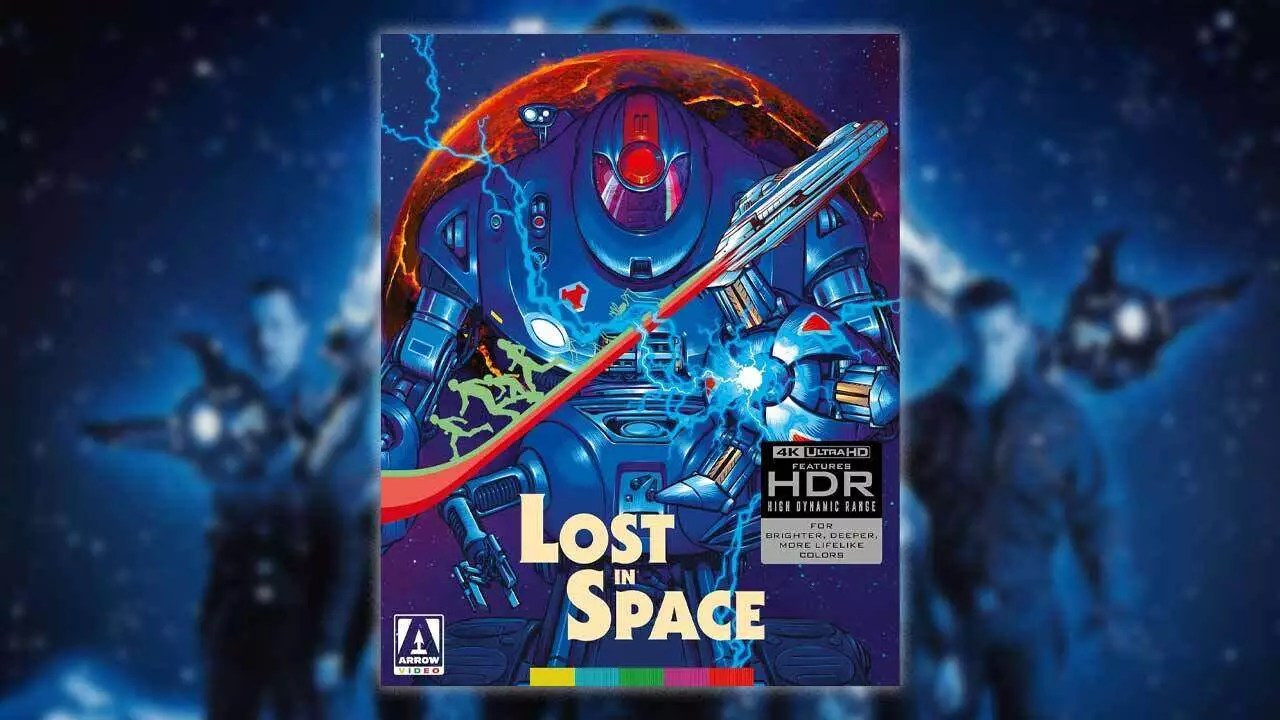Among the countless sci-fi adventures that have shaped our cinematic landscape, “Lost in Space” stands out as a fascinating case of retro-futurism and cult appeal. While the 1998 film directed by Stephen Hopkins didn’t receive warm critical reviews at the time, it has garnered a nostalgic following that elevates its status to a cherished classic. Now, Arrow Video’s upcoming 4K restoration introduces a new chapter for this cinematic piece, offering fans and newcomers an opportunity to experience it anew. Priced competitively at just $33—a significant discount from its original $50—the Limited Edition release emphasizes both technological excellence and collector’s appeal.
The beauty of this 4K edition lies in its commitment to restoration fidelity. Using the original camera negative, the film has undergone meticulous remastering in native 2160p resolution, ensuring every frame gleams with clarity. Approving this monumental effort is none other than director Stephen Hopkins himself, which lends an authenticity and legacy seal to this project. Supported by Dolby Vision HDR and HDR10 standards, the visual presentation captures the film’s vibrant palette and detailed textures, bringing the outdated CGI and practical effects into a dazzling high-dynamic range spectacle. This is a crucial upgrade for fans yearning for a viewing experience that approaches the film’s original intended presentation—something that the film’s initial release and even many subsequent digital versions failed to deliver.
Beyond Restoration: A Collector’s Dream
This release is not merely about visual fidelity—it’s a celebration of the film’s enduring fanbase and its place in sci-fi history. Arrow’s Limited Edition packaging elevates the experience, offering a reversible sleeve with exclusive artwork and a collectible booklet packed with insightful commentary, behind-the-scenes notes, and articles previously published in “American Cinematographer.” The physical extras are a testament to the care and passion Arrow invests in its restorations, transforming a standard viewing into a tangible, immersive collector’s item.
For enthusiasts of great storytelling and special effects, the bonus content on-disc is a treasure trove. The inclusion of newly produced interviews with key figures such as Stephen Hopkins and Akiva Goldsman offers a rare behind-the-scenes perspective. The special effects building featurette, archival interviews, and video essays deepen our understanding of the film’s design and conceptual ambitions, pointing to its visionary approach despite its mixed reception. This level of detail signals that Arrow isn’t merely releasing a film but celebrating its artistic and technical achievements—however underrated they may be.
Analyzing the Film’s Cultural Significance
The “Lost in Space” film is more than a commercial product; it exemplifies the complex relationship between disappointment and cult reverence. Though critics initially dismissed its special effects and storytelling, its core premise—a family stranded in a distant galaxy—remains evocative. The film attempts to modernize and expand upon the 1960s TV series, injecting the narrative with high-octane action, advanced visual effects, and a cast of noteworthy actors including William Hurt and Gary Oldman.
What makes this film intriguing is its dual appeal: it’s both a nostalgic homage to an earlier era of TV and a groundbreaking visual experiment. Despite its flaws, it captured the imagination with its ambitious scope—a feature that epitomized the late ‘90s blockbuster spirit. Its commercial success, coupled with its subsequent status as a cult classic, underscores a universal truth: sometimes movies are better appreciated in retrospect, through the lens of technological advancements and dedicated fan communities.
The remake Netflix produced in 2018 further attests to the story’s timelessness. The series brought a fresh perspective, expanding the universe and offering more character-driven narratives. However, the 1998 film’s aesthetic and thematic ambition still hold a distinctive charm, which the new 4K edition aims to preserve and showcase in impeccable detail. For longtime fans, it’s an opportunity to revisit the film with renewed appreciation, appreciating its visual splendor and the effort that went into translating its bold ideas onto the screen.
The Broader Context and Arrow’s Legacy
Arrow Video’s dedication to restoring and celebrating cult classics like “Lost in Space” reflects their understanding that film history is a layered tapestry—full of overlooked gems and moments that define eras. Their releases, which include other genre staples like “Spawn,” “Creepshow 2,” and “Ringu,” highlight their commitment to quality preservation and cultural appreciation.
This approach reinforces a broader cultural truth: movies are not static objects, but living artifacts that gain layers of meaning over time. When companies like Arrow prioritize high-fidelity restorations and rich bonus content, they’re not just selling movies—they’re championing the art, craft, and history behind them. The new edition of “Lost in Space” is more than a remastered film; it’s a collector’s statement, a tribute to enduring sci-fi imagination, and a testament to the power of technological progress in cinema preservation.
As film enthusiasts and casual viewers alike contemplate this limited edition release, it prompts a reevaluation of how we value films that may have been misunderstood or underappreciated upon release. Sometimes, only with time, advanced technology, and dedicated fan support can a film truly find its rightful place in the pantheon of cult classics. “Lost in Space,” this new edition proves, is ripe for rediscovery—and thanks to Arrow’s meticulous restoration, its future looks brighter than ever.


Leave a Reply